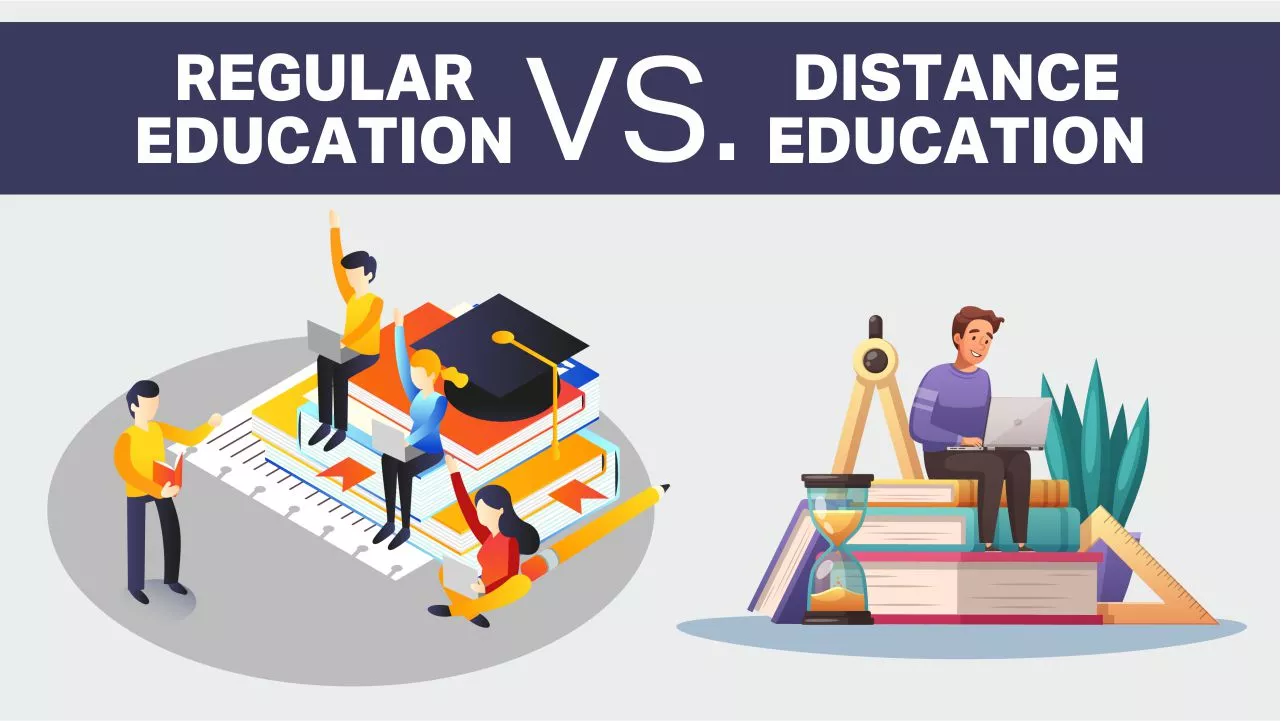
Regular Education vs. Distance Education: Choosing the Right Path for Your Learning Journey
Education is the foundation of personal and professional growth, whether it comes from distance education or regular. In today’s digital age, there are more options than ever before. Traditional face-to-face learning, known as regular education, has been the predominant method for centuries. However, with advancements in technology, distance education has emerged as a popular alternative. In this blog, we will explore regular vs distance education including their meanings, modes of delivery, benefits, and considerations. By understanding these aspects, you can make an informed decision about which approach suits your learning needs and circumstances.
Regular Education: The Traditional Classroom Experience
Regular education refers to the traditional mode of education where students attend classes physically in an institution. It involves face-to-face interaction with instructors and classmates. This conventional approach offers a structured learning environment with fixed schedules and real-time interaction with teachers.
Distance Education: Embracing Flexibility and Technology
Distance education enables learners to pursue their education remotely, without being physically present in a traditional classroom setting. It utilizes technology to deliver educational content, facilitate communication, and assess student progress. Distance education encompasses a range of formats, including online courses, video lectures, interactive webinars, and virtual classrooms.
Is Distance Education Equal to Regular Education?
While distance education differs from regular education in terms of delivery and physical presence. It is designed to provide the same quality of education. Distance learning programs are developed and delivered by experienced instructors who adhere to rigorous academic standards.
The curriculum, assignments, and assessments are designed to ensure students acquire the necessary knowledge and skills for their chosen field. Moreover, accredited institutions offer distance education programs that are recognized and respected in the job market.
Benefits of Regular Education
Regular education offers several advantages that stem from face-to-face interaction and a structured classroom environment. It promotes immediate feedback and clarification of concepts through direct communication with instructors.
Regular education also encourages peer interaction and collaboration, fostering teamwork and social development. Furthermore, in-person learning allows for hands-on experiences, laboratory work, and practical demonstrations. It could be valuable in fields such as science, engineering, and healthcare.
Benefits of Distance Education
Distance education offers unique benefits that cater to the needs of a diverse learner population. The flexibility of scheduling allows individuals to balance their educational pursuits with work, family responsibilities, or other commitments.
Students have the freedom to learn at their own pace and access course materials from anywhere with an internet connection. Distance education also promotes self-discipline, time management, and digital literacy skills, which are increasingly essential in today’s interconnected world.
Considerations for Choosing the Right Path
When deciding between regular education and distance education, consider the following factors:
- Learning Style: Reflect on your preferred learning style and how it aligns with the modes of instruction in each format. Some individuals thrive in face-to-face interactions, while others excel in self-directed online learning.
- Flexibility: Assess your lifestyle, work commitments, and personal obligations. Distance education offers more flexibility. It allows you to customize your learning schedule to accommodate other responsibilities.
- Practical Considerations: Evaluate the practicality of attending regular classes, including commuting time, living arrangements, and financial implications. Distance education eliminates these concerns, providing a cost-effective alternative for many students.
- Career Goals: Research the specific requirements and expectations of your desired career path. Certain professions may require hands-on training or prefer candidates with a traditional education background.
Conclusion
Both distance education and regular education have their unique advantages and considerations. Regular education offers face-to-face interaction, hands-on experiences, and structured learning environments.
On the other side, distance education provides flexibility, convenience, and accessibility. Ultimately, the choice between the two depends on individual preferences, circumstances, and educational goals. By carefully considering these factors, one can embark on a learning journey. A journey that suits your needs and sets you up for success in your chosen field.
Recent Post
